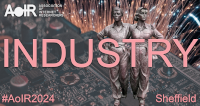LICENSE TO SURVEIL? IMAGINING THE FUTURE OF VEHICLES AS COMPUTERS
DOI:
https://doi.org/10.5210/spir.v2024i0.14029Palabras clave:
surveillance, infrastructures, privacy, vehicles, imaginariesResumen
The widespread collection of vehicle data poses many privacy and justice issues. With the increasing datafication of vehicles, new questions are emerging, which are troublingthe imaginaries of different actors. This paper asks: How does the future-oriented imaginary of datafication relate to current practices in vehicle data, particularly for policing? At the same time, how is this imaginary unfolding as privacy/justice concerns for activists and regulators? It draws from semi-structured interviews with over 30 people working on algorithmic surveillance—including police officers and surveillance manufacturers, but also activists and regulators. It also builds on fieldwork conducted at policing/traffic conferences, particularly sessions on “the future” or “emergent technologies”. It finds: 1) In direct relation to Gekker & Hind’s (2019) concept of “infrastructural surveillance”, that vehicles are already imagined as connected computers, constantly generating surveillance data. Among activists and regulators, this future leads to anxiety around function creep, as manufacturers may decide to change their policies, or new forms of analysis may be enabled for policing; 2) How concern over a future of data excess exists, particularly for policing institutions. This is responded through increased efforts of data integration and a techno-solutionist narrative of AI, but also smaller interventions. For activists, this relates to wider fears over "predictive policing" and its injustices. The paper thus contributes to critical data studies literature, supporting renewed considerations for privacy and justice frameworks in a world where vehicles act as infrastructures for constant surveillance.Descargas
Publicado
2025-01-02
Cómo citar
Pereira, . G. (2025). LICENSE TO SURVEIL? IMAGINING THE FUTURE OF VEHICLES AS COMPUTERS. AoIR Selected Papers of Internet Research. https://doi.org/10.5210/spir.v2024i0.14029
Número
Sección
Papers P

